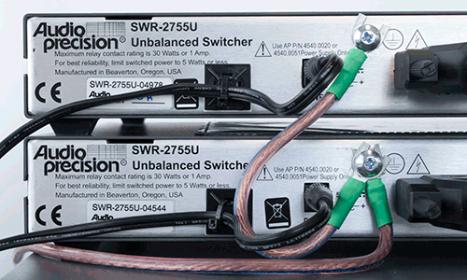I started this thread because of a comment of T-Bone's in another thread (don't know if you hyphenate, but anybody that has the same name as the legendary guitarist is OK in my book, hell, even if it's a reference to steak, not music, I'm still good with it).
Here's one question, to get the ball rolling:
I use high efficiency speakers over which you can hear all sorts of nasties that might get lost in the murk on a less efficient speaker system. I went through the tortures of the damned to get my AC sorted without using line conditioning- basically just a subpanel and dedicated lines, additional ground, and checking polarity, lower noise leg of 240 v line, etc. System is very quiet but there are still grounding differences between the different dedicated lines and different components, depending on how they are grounded internally, can create issues- usually manifest by a very low level hum. I eventually get that sorted too, or find something that is causing it elsewhere in the house (or in one recent instance, work on a transformer one down from ours on the pole).
Anyway, that's the precis. First question:
how can those external star grounding things, like the Granite Audio thing and the much more expensive one, the name of which escapes me, really do much? I get the idea of star grounding stuff, but you still have the 3rd pin on the AC power cord plugged into the receptacle; it's not like you are really lifting ground on the AC and replacing it with the external star grounding scheme.
I get how the Brits advocated going into one receptacle to reduce grounding differences and then using a distribution block (that itself may be star grounded). Maybe my system would play off one 20 amp outlet, i never tried it.
And, relatedly, daisy chaining grounds among dedicated lines?
(Don't worry, I'm not about to start fooling around with the stuff in the wall. But, these questions have been at the back of my mind for a while, and since T-Bone volunteered that he knew a bit about this area, I figured I'd have a go at it).
TIA.
Bill Hart
Here's one question, to get the ball rolling:
I use high efficiency speakers over which you can hear all sorts of nasties that might get lost in the murk on a less efficient speaker system. I went through the tortures of the damned to get my AC sorted without using line conditioning- basically just a subpanel and dedicated lines, additional ground, and checking polarity, lower noise leg of 240 v line, etc. System is very quiet but there are still grounding differences between the different dedicated lines and different components, depending on how they are grounded internally, can create issues- usually manifest by a very low level hum. I eventually get that sorted too, or find something that is causing it elsewhere in the house (or in one recent instance, work on a transformer one down from ours on the pole).
Anyway, that's the precis. First question:
how can those external star grounding things, like the Granite Audio thing and the much more expensive one, the name of which escapes me, really do much? I get the idea of star grounding stuff, but you still have the 3rd pin on the AC power cord plugged into the receptacle; it's not like you are really lifting ground on the AC and replacing it with the external star grounding scheme.
I get how the Brits advocated going into one receptacle to reduce grounding differences and then using a distribution block (that itself may be star grounded). Maybe my system would play off one 20 amp outlet, i never tried it.
And, relatedly, daisy chaining grounds among dedicated lines?
(Don't worry, I'm not about to start fooling around with the stuff in the wall. But, these questions have been at the back of my mind for a while, and since T-Bone volunteered that he knew a bit about this area, I figured I'd have a go at it).
TIA.
Bill Hart
Last edited:

















